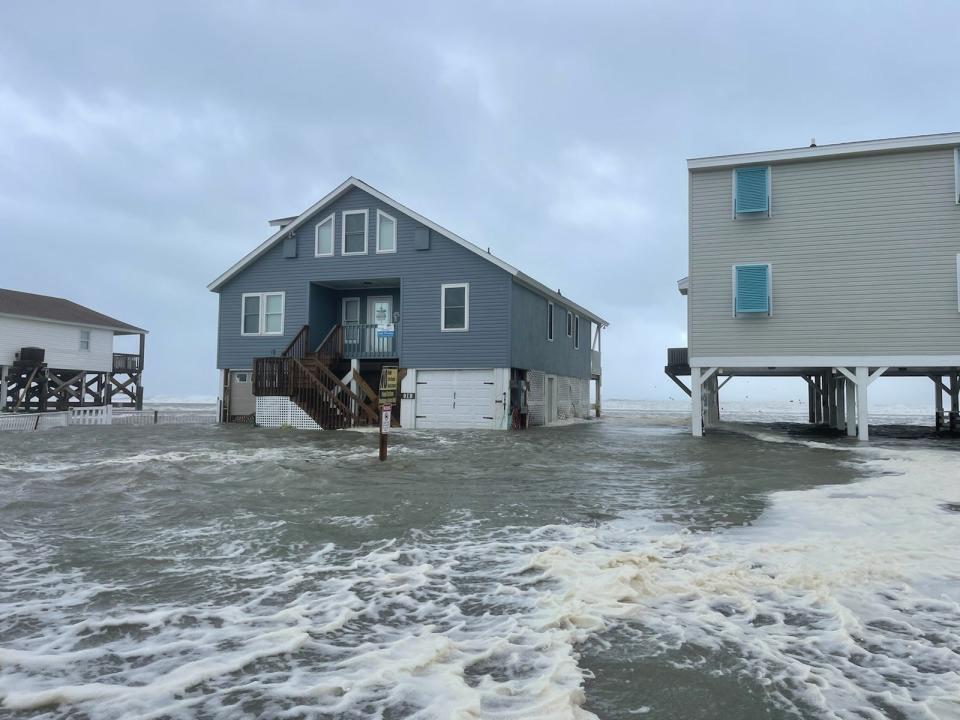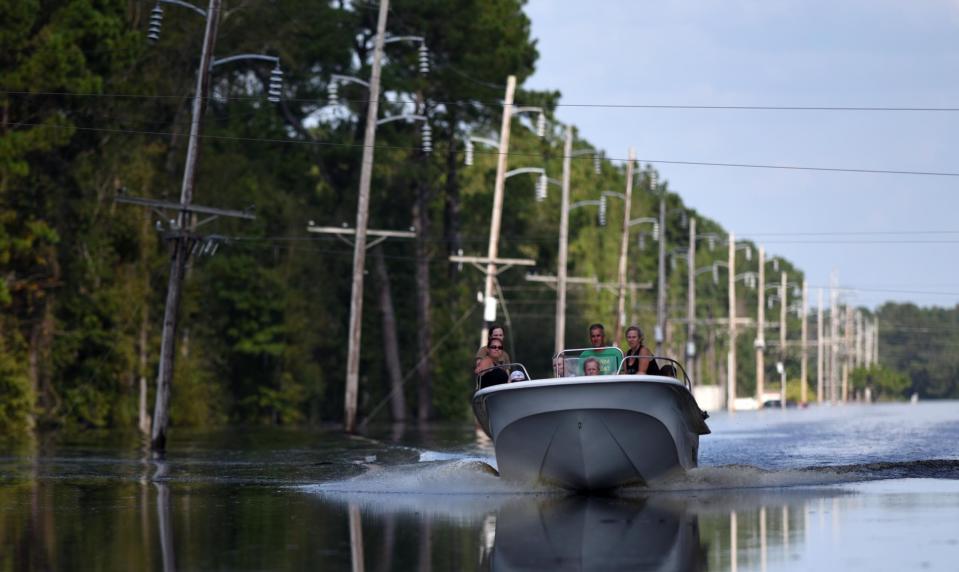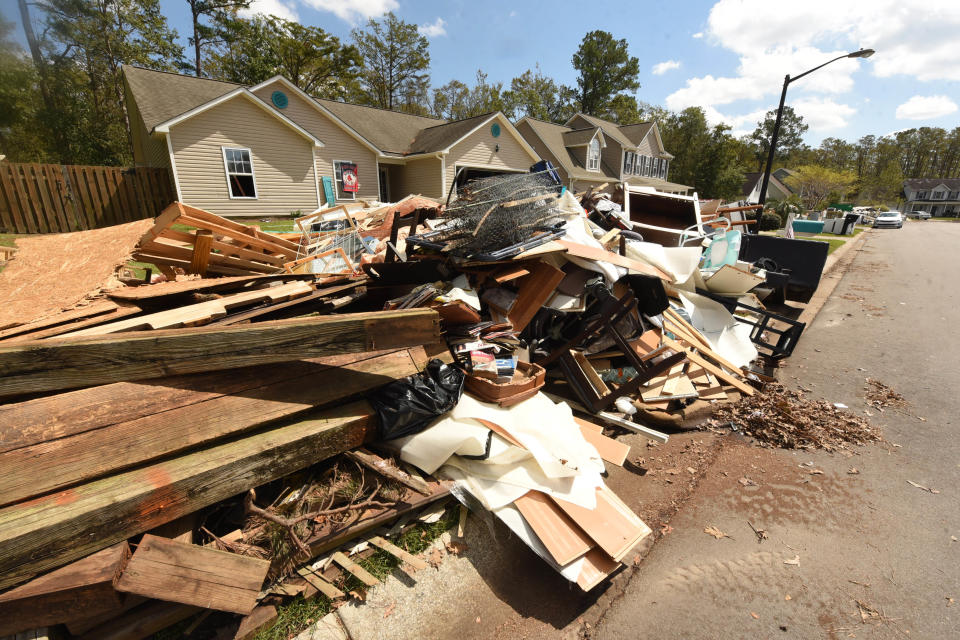Sticker shock: NC's insurance companies want to raise rates for coastal homeowners by 99%
![Bald Head Island suffered significant damage from Hurricane Florence, including flooding. [KEN BLEVINS/STARNEWS]](https://s.yimg.com/ny/api/res/1.2/3DDTAYvFrJx84YVzGGO8Vg--/YXBwaWQ9aGlnaGxhbmRlcjt3PTEyNDI7aD04Mjg-/https://media.zenfs.com/en/star-news/44c621611de03a708858e6d056abd72e)
The proposed increases are eye watering.
The N.C. Rate Bureau, which represents the insurance industry in the Tar Heel State, has asked state regulators to approve a massive increase in homeowner insurance rates.
How big? Well, the increase would average out to about 42% statewide. But that figure, as large as it is, doesn't encompass the hit some property owners would take, especially along the coast.
Here's a look at how badly coastal homeowners could be hit by higher insurance rates, what's behind the industry's logic for proposing such massive increases, and what rate hikes are consumers really likely to see.
Sticker shock
The proposal would hammer property owners in coastal areas of the Cape Fear region.
The bureau has proposed an increase of 99.4% for beachfront properties in New Hanover, Brunswick and Pender counties in the Wilmington area and Carteret County, which includes Emerald Isle. Farther up the N.C. coast, beach areas along the Outer Banks would see a 45% increase.
Areas on the mainland but near the Intracoastal Waterway in the Wilmington area would see proposed increases of 71.4% for those roughly from U.S. 17 oceanward and 43% for those farther inland. The increases would be determined by a property's ZIP code.
Proposed increases in the rest of the state also would be substantial, but not as much as a gut punch for coastal homeowners in Southeastern North Carolina. In coastal areas between Morehead City and the Virginia state line, most policies would jump by roughly 25%. Farther inland, Duplin and Lenoir counties would see rates go up 71%, while Triangle homeowners would see a price increase of nearly 40%. The proposed increases around Charlotte and Asheville would be 41% and 20%, respectively.
The new increase comes a little over three years after the insurance industry requested an overall average increase of 24.5%. That filing resulted in a settlement between insurers and the state for an overall average rate increase of 7.9%.

Why hit the coast so hard?
Industry officials say a lot of factors are at play that's making insuring properties at the coast more risky and less profitable.
Near the top is the inherent uncertainty and increased risk brought on by climate change. The warming weather is allowing bigger and more powerful hurricanes to threaten coastal areas up and down the U.S. Gulf and East Coasts. The changing climate, which means tropical systems can hold more moisture, travel farther inland, and threaten areas farther north, is also expanding the traditional hurricane season into the early spring and early winter periods. Flooding woes also are widening beyond traditional flood-prone areas as infrastructure is overwhelmed by periods of heavy rainfall − ala Hurricanes Matthew in 2016 and Florence in 2018. Damages tied to Florence, for example, were estimated to top $22 billion in North Carolina, with much of that hitting inland areas.
Jarred Chappell, chief operating officer with the rate bureau, said the increase in the number of natural disasters and the payments forked out by insurance companies in their wake is also driving up the cost of insurance that the insurance companies themselves take out to help them stay solvent during high claim events. He estimated the cost of reinsurance, the insurance for insurers, is rising at nearly 50% a year, with no one clear when the massive increases that companies have to shoulder or pass on to their customers will end.
MOVING INLAND: A warming planet is pushing hurricanes north and deeper inland. What that means for NC
Chappell said rising costs for labor and raw materials also are making repairs more expensive, further eating into the cost for insurers.
But another factor, officials say, is one that homeowners probably on one hand don't mind seeing − the rising value of coastal property. Nearly a dozen homes in New Hanover County have sold for more than $6 million, and nearly all of those sales have occurred in the past few years, according to MLS statistics. Even more "affordable" properties have seen their values surge in the lead up and through the pandemic years. Using data from the real estate website Zillow, the online data website Stacker determined that Wrightsville Beach was the North Carolina community with the fastest-growing home prices. The site said home values in the popular New Hanover County beach town averaged nearly $1.35 million in March 2023, with prices up 8.6% over one year and 82% over five years. Among other Tar Heel communities that have seen the biggest property value increases, a big chunk were other towns clustered on or near the state's string of barrier islands.
Rebuilding or repairing more valuable property is inherently more expensive. And the rising risk for insurers comes just as more and more people are deciding to give coastal living a shot. The population of New Hanover, Brunswick and Pender counties − the Wilmington metropolitan statistical area (MSA) − is forecast to increase from 450,000 in 2020 to more than 625,000 by 2040. Other coastal areas in the South, such as Florida and South Carolina, are seeing similar population booms.

Are coastal homeowners getting picked on?
Considering other recent rate increases, a lot of residents probably feel that way.
The N.C. rate bureau last summer proposed a 50.6% increase in dwelling insurance rates, which covers second homes and rental properties. While rates statewide would rise by more than half under the plan, they would increase much more near the coast. The proposed increases for extended coverage in "Territory 140," which covers beach and coastal areas in Southeastern North Carolina, would go up more than 97% for buildings and 70% for contents. A public hearing on the proposed increases is scheduled for April 8.
UPWARD TREND: Insurance on NC beach rentals is going up again, potentially by a lot. Here's why.
The federal government also is looking to "right-size" its financial liabilities in our new climate change-influenced world by significantly raising the costs of participating in FEMA's National Flood Insurance Program by moving to a risk-based approach in determining premiums. First Street Foundation, a nonprofit research and technology group based in Brooklyn, New York, estimates the average flood insurance premium charged to the country’s most flood-prone homes would have to more than quadruple to make the flood program, which annually bleeds red ink, solvent and ensure homeowners are paying their fair share.
Under congressional and other pressures, FEMA will now raise premiums by a maximum of 18% a year until policies meet the new rate recommendation on a property's potential risk. Many coastal and inland areas in Southeastern N.C. are in areas where flood insurance is required if you have a mortgage.

SURGING RATES: North Carolina could be facing years of rising flood insurance premiums
What happens now?
Since the insurance market in North Carolina is regulated, the industry has to submit its proposed rate increases to the N.C. Department of Insurance. The review process includes a public comment period.
If Insurance Commissioner Mike Causey, as expected, doesn't agree with the requested rate increases, the rates will either be denied or negotiated with industry. If a settlement cannot be reached within 50 days, the commissioner will call for a hearing.
If history is any guide, the parties will likely agree on a settlement that includes a rate increase smaller than what insurers want but potentially much higher than what homeowners think they should have to shoulder. One increasing concern for state regulators is how insurance markets in other Southern coastal states are contracting and becoming more and more difficult as companies decide they would rather leave those markets, and abandon potential customers and business, than be on the hook for risky coverages where they often aren't allowed by states to charge premiums they feel are necessary to cover their exposure risks. This is especially true in Florida and Louisiana, two other hurricane-prone states that have seen significant storm strikes and payouts by insurers in recent years.
There are four ways the public can submit their thoughts on the proposed increases.
A public comment forum will be held to listen to public input at the N.C. Department of Insurance’s Jim Long Hearing Room, 325 N. Salisbury St., Raleigh, on Jan. 22 from 10 a.m. to 4:30 p.m.
A virtual public comment forum will be held simultaneously with the in-person forum on Jan. 22 from 10 a.m. to 4:30 p.m. The link to this virtual forum will be: https://ncgov.webex.com/ncgov/j.php?MTID=mb3fe10c8f69bbedd2aaece485915db7e
Emailed public comments should be sent by Feb. 2 to: NCDOI.2024Homeowners@ncdoi.gov.
Written public comments must be received by Kimberly W. Pearce, Paralegal III, by Feb. 2 and addressed to 1201 Mail Service Center, Raleigh, N.C. 27699-1201.
Reporter Gareth McGrath can be reached at GMcGrath@Gannett.com or @GarethMcGrathSN on X/Twitter. This story was produced with financial support from the Green South Foundation and the Prentice Foundation. The USA TODAY Network maintains full editorial control of the work.
This article originally appeared on Wilmington StarNews: NC insurers want to nearly double rates for coastal homeowners


